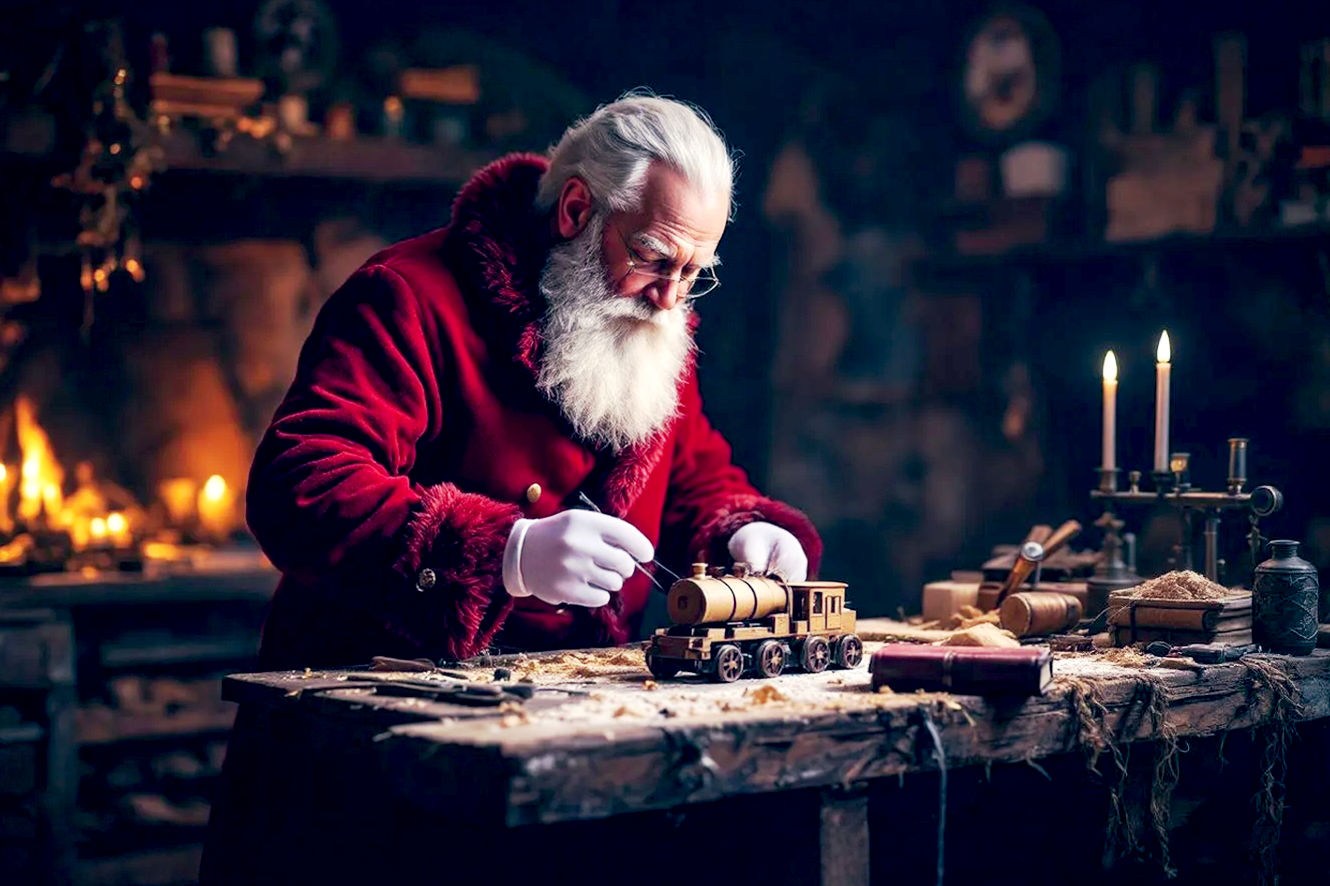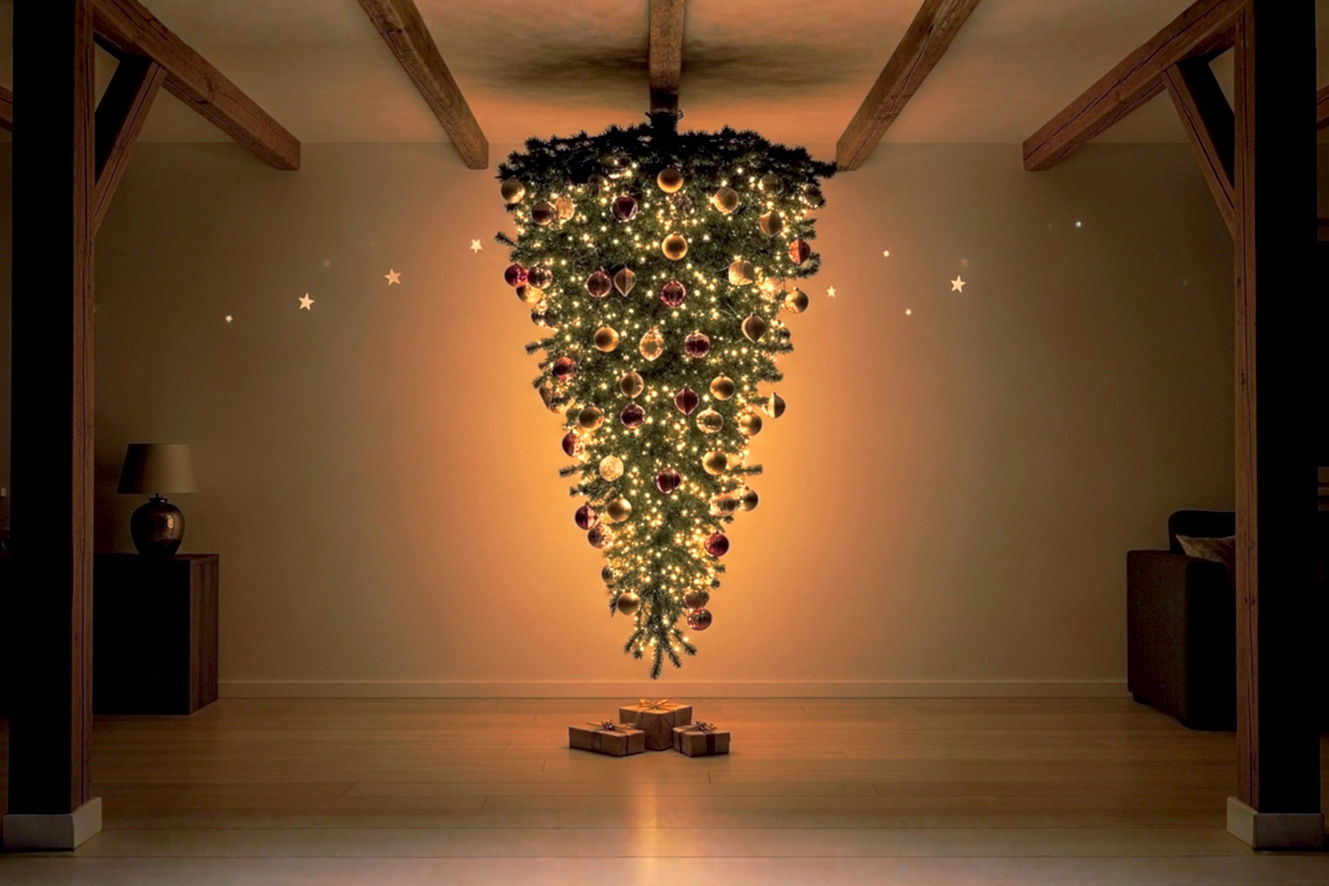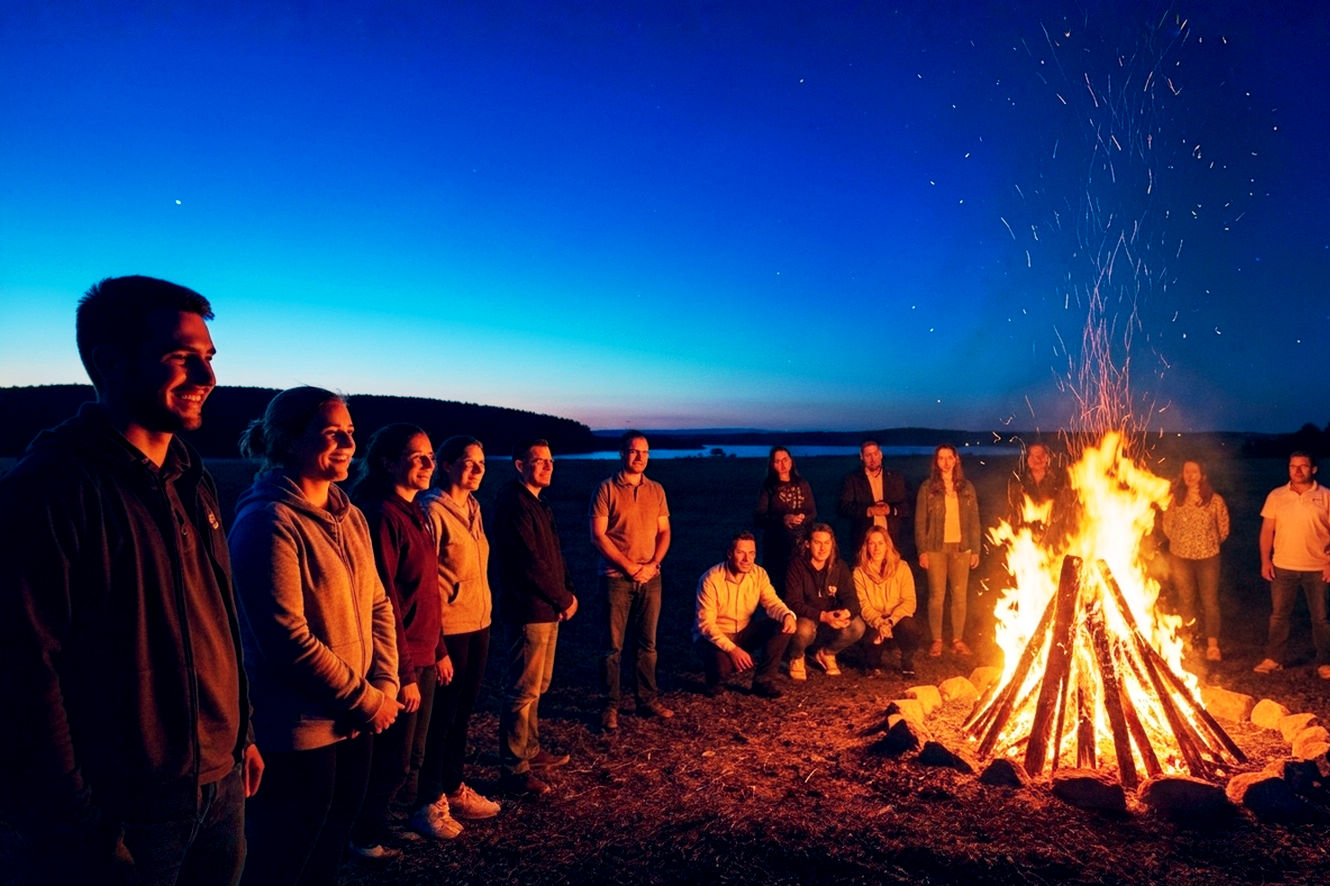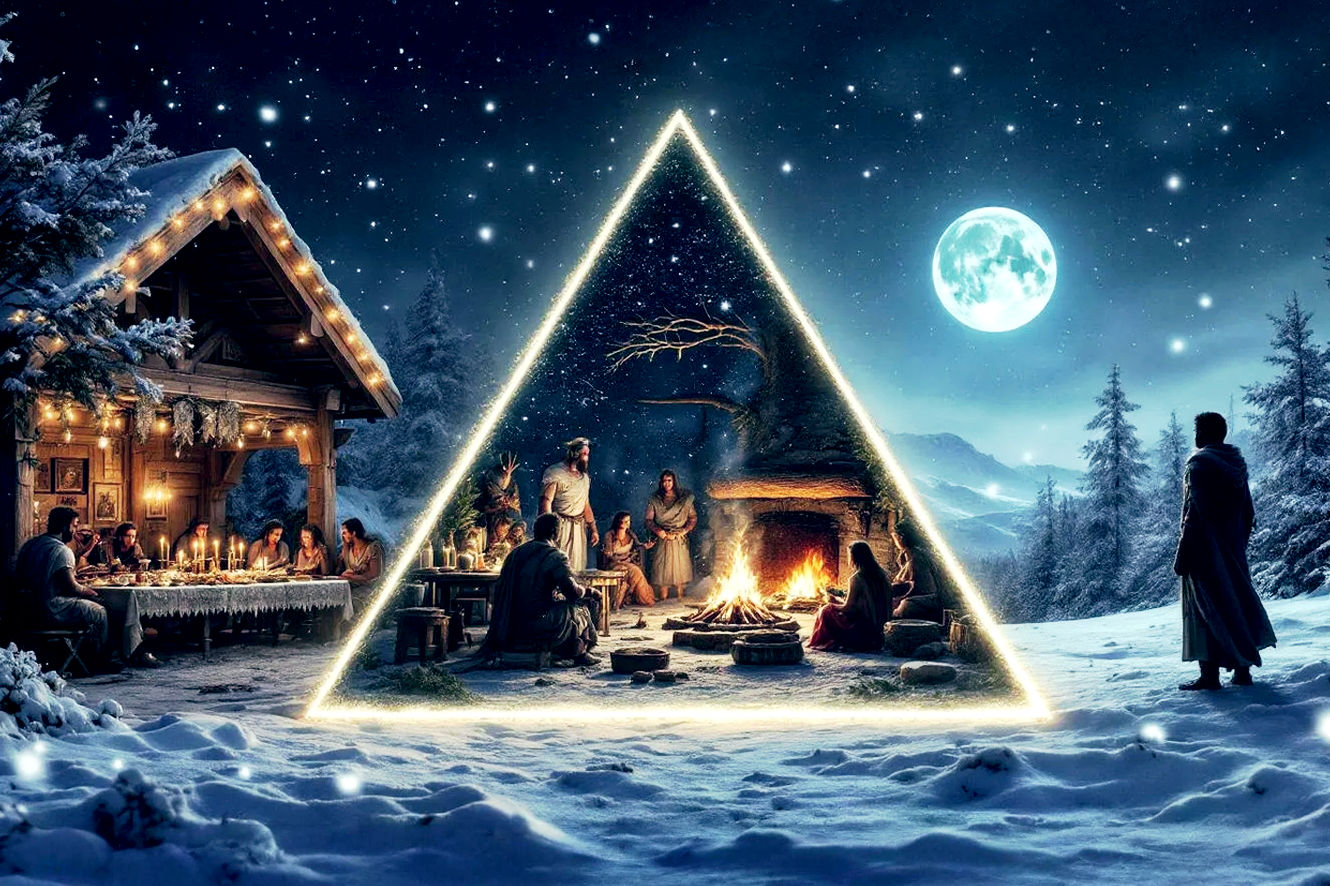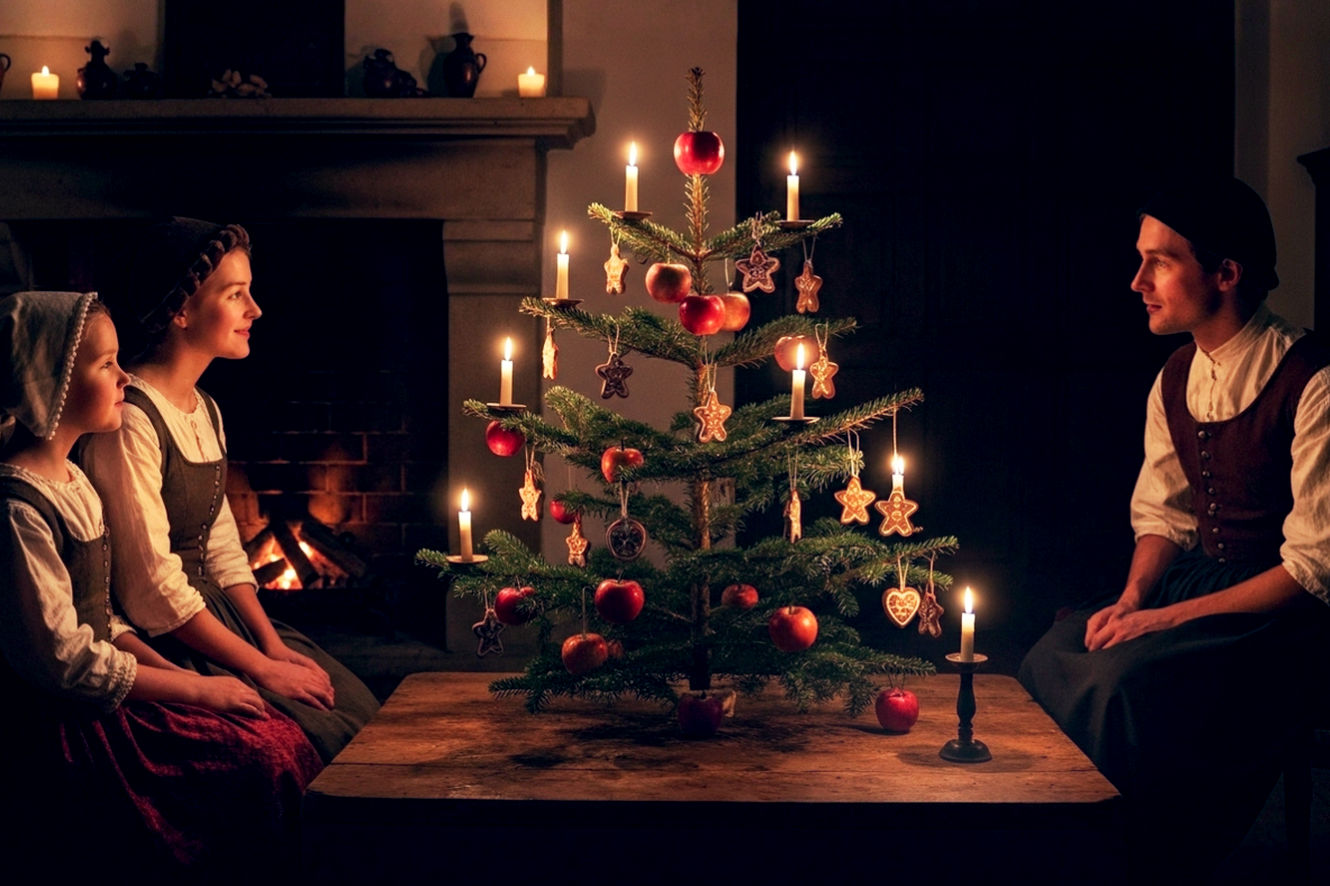This post may contain affiliate links. If you make a purchase through these links, we may earn a commission at no additional cost to you.
The Christmas tree is a global symbol of holiday cheer, a beacon of festive spirit found in homes, town squares, and public spaces around the world. Every year, millions of families engage in the timeless ritual of decorating an evergreen, but few know the deep, complex history behind this tradition. It isn’t a simple story; it’s a journey that spans millennia, weaving together ancient pagan rituals, medieval theatrical plays, German folklore, and royal influence. This guide looks at the origins of the Christmas tree, tracing its evolution from a pagan symbol of life to the iconic centerpiece of our modern Christmas celebrations.
Roots Deeper Than Christianity: The Pagan and Pre-Christian Origins
The story of the Christmas tree doesn’t begin with Christmas. Its roots are far older, reaching into the ancient world and the traditions of cultures that lived long before the birth of Christianity. These early peoples, living in close harmony with the seasons, held a profound reverence for evergreen trees, particularly during the bleakest days of winter.
The Ancient Significance of Evergreens
Evergreen trees, like firs, pines, and spruces, stood out as powerful symbols of life and resilience. While all other plants and trees appeared to die in the cold, their needles remained green and vibrant. This seemingly miraculous persistence was not lost on ancient civilizations, who saw these trees as potent metaphors for eternal life, renewal, and hope. They were a promise that spring and the sun would eventually return, even when the world was at its darkest. This is the foundational, operational context that gave these ancient experiences their unique depth: a symbolic fight against the cold and dark.
- Key Concepts: This reverence was deeply tied to the winter solstice, the shortest day of the year. For cultures across the Northern Hemisphere, this was a time of great anxiety, as they feared the sun might not return. Evergreens were seen as magical plants that could ward off winter’s demons and symbolize the triumph of light over darkness.
- Historical Context: The use of evergreens was a crucial part of many solstice celebrations. It was an act of both honoring nature’s resilience and actively inviting the sun’s return. The traditions were not merely decorative; they were ritualistic and deeply meaningful to the survival of the community.
- Specific Examples: The ancient Romans celebrated the festival of Saturnalia in mid-December. They decorated their homes and temples with evergreen boughs to celebrate the god Saturn and the return of the sun. Similarly, the Druids in ancient Celtic cultures used fir trees and other evergreens in their rituals to symbolize new life, and the Egyptians brought palm branches into their homes during the solstice to celebrate the god Ra, a sun god.
The German Cradle of the Modern Christmas Tree Tradition
While the ancient world laid the symbolic groundwork, the direct line to our modern Christmas tree tradition is unequivocally German. This is where the evergreen’s ceremonial use transitioned from a general pagan practice to a specific Christmas-related one.
The First Evidence: Medieval German Guilds and the Paradise Tree
The most critical and verifiable starting point for the Christmas tree as we know it is the 15th and 16th-century German tradition of the “Paradise Play.” These religious plays, performed on Christmas Eve (the feast day of Adam and Eve), recounted the story of creation and the Fall of Man. The central stage prop was a fir tree, decorated with apples, to represent the Tree of Knowledge in the Garden of Eden. This was a public, theatrical display, not a private home decoration, and it was a tradition largely maintained by local guilds.
- Historical Timeline: These plays were a key part of German Christmas celebrations long before the tree became a domestic fixture. Records from the city of Strasbourg in the 16th century describe public trees being decorated with apples, wafers, and gilded paper.
- Operational Details: This “Paradise Tree” was not a Christmas tree in the modern sense. It had a specific, singular purpose: to act as a prop for a religious play. The tree’s decorations—apples, wafers, and later, other symbolic items—were not for aesthetic purposes but to represent elements of the biblical story. The fact that the guilds of Strasbourg were the ones maintaining and performing these plays and decorating the trees gives a glimpse into the societal context and the role of professional organizations in perpetuating cultural traditions.
The Shift to Private Homes: The 16th-Century Innovation
The true innovation came when German Protestants began to bring the decorated tree into their own homes. This shift from a public, community-led event to a private, family-centered tradition was monumental. The act of decorating a tree became a personal and intimate expression of faith and celebration.
- Historical Figures: The Reformation played a significant role here, as Protestants moved away from elaborate church rituals and focused more on family-oriented celebrations within the home. The idea of the decorated tree as a domestic symbol flourished in this environment.
- Key Details: The decorations continued to evolve from the simple apples of the Paradise Tree. German families in the 16th and 17th centuries began adorning their trees with small, delicate paper roses, nuts, cookies, and candles. These candles were an especially important addition, symbolizing the light of Christ. This practice, while beautiful, was also extremely dangerous and led to countless house fires—a practical consideration that would eventually be solved by a later invention.
The Martin Luther Legend: Fact or Fable?
A popular and enduring story attributes the first Christmas tree to the Protestant reformer Martin Luther. The legend goes that one winter evening in the 16th century, Luther was walking through a forest and was so captivated by the sight of stars twinkling through the branches of a fir tree that he brought the tree home and decorated it with lit candles to recreate the beautiful sight for his family.
- The Story: While this tale is heartwarming and has been a cornerstone of Christmas lore for generations, it is not supported by any historical evidence. No writings from Luther’s time mention this event.
- Nuanced Analysis: Historians widely agree that this story is a later fabrication. However, it’s an important part of the Christmas tree’s history because it powerfully linked the tree with a significant historical figure and, more importantly, with a strong Christian message. The story helped to spread the tradition and give it a spiritual depth that resonated with many. While historically inaccurate, its impact on the cultural narrative is undeniable.
Spreading Across the Globe: From German Forests to Royal Palaces and American Parlors
For centuries, the Christmas tree remained a primarily German tradition, largely confined to the nation’s borders and the homes of German immigrants in other countries. The spark that made it a global phenomenon came from an unexpected source: the British Royal Family.
The English Royal Connection: Queen Victoria’s Influence
The single most pivotal moment in the Christmas tree’s journey to international fame was an illustration published in 1848. Queen Victoria’s German husband, Prince Albert, had brought the tradition to England. That year, the Illustrated London News published a drawing of the royal couple and their children gathered around a beautifully decorated Christmas tree at Windsor Castle.
- Historical Event: The image showed a gorgeously adorned tree, complete with candles, baubles, and gingerbread. This was not a private family photo in the modern sense; it was a powerful piece of media distributed to a wide audience.
- Societal Impact: The British public, and indeed the entire English-speaking world, revered the monarchy. This image immediately transformed the Christmas tree from a peculiar German custom into a symbol of refined, upper-class British celebration. If it was good enough for the Queen, it was good enough for everyone. The tradition was almost instantly adopted by the British aristocracy and quickly spread to the middle and working classes, becoming an essential part of the British Christmas experience.
The American Adoption: A Slow but Steady Embrace
The Christmas tree’s journey to American prominence was less immediate than in Britain. Puritan traditions in early colonial America often rejected Christmas celebrations as “popish” or pagan. It wasn’t until the 19th century that the tradition truly took hold, largely due to the influx of German immigrants and the influence of British media.
- Early Opposition: In the early 1800s, Christmas was not even an official holiday in many American states. Celebrations were often met with disapproval, and the idea of a decorated tree would have been seen as frivolous or sacrilegious by many.
- German Immigrant Influence: German communities, particularly in Pennsylvania, kept the tradition alive. They held private family gatherings and decorated trees in their homes, but the practice was not widespread. A notable early public display was a decorated tree set up by German immigrants in Boston in 1856, but it didn’t immediately create a national trend.
- The Final Popularization: The arrival of the Queen Victoria illustration in American newspapers like Godey’s Lady’s Book finally convinced the American public to embrace the tradition. By the late 19th century, the Christmas tree was no longer a foreign custom but a mainstream American symbol of the holidays.
The Evolution of the Christmas Tree: From Simple Decor to High-Tech Spectacle
Once the Christmas tree was established as a tradition, its decorations and form began a rapid evolution, driven by innovation, industrialization, and changing tastes. The simple tree with nuts and candles was a far cry from the elaborate, brightly lit spectacles we see today.
The Ornamentation Revolution
The earliest trees were decorated with edible items and handmade trinkets. This changed dramatically with the rise of industrial manufacturing.
- Early Decorations: For centuries, trees were adorned with what was readily available: apples from the Paradise Tree, dried berries, nuts, pastries, and paper chains. It was a rustic, edible aesthetic.
- Technological Shift: The true revolution came from Lauscha, Germany, a small town in the Thuringian Forest known for its glass-making. In the mid-19th century, skilled artisans began blowing glass into intricate baubles, bells, and stars. These hand-blown glass ornaments, often lined with silver nitrate to give them a lustrous shine, quickly became popular across Germany and then the world. This innovation, though seemingly simple, turned the Christmas tree into a canvas for industrial artistry, making it a more permanent and durable decoration.
The Advent of Electric Lights
The most significant operational and safety improvement in the history of the Christmas tree was the invention of electric lights. Before this, trees were lit with real candles, which were beautiful but presented an immense fire hazard.
- Historical Figure: The shift away from candles is attributed to Edward Johnson, a close friend and associate of Thomas Edison. In 1882, Johnson hand-wired 80 small red, white, and blue electric light bulbs and strung them around a small fir tree in his New York City home. He proudly put the tree on a rotating stand and displayed it in his parlor window.
- Practical Implications: The idea was revolutionary but initially very expensive. It took several decades for electric Christmas lights to become affordable and safe for the average consumer. However, the precedent was set. The move to electric lights eliminated the constant fear of fire, allowing for much more elaborate and brightly lit trees. This simple technological change transformed the very essence of the Christmas tree, enabling it to become the dazzling, glowing spectacle we know today.
The Great Debate: Real vs. Artificial Trees
The Christmas tree’s evolution also includes the rise of its artificial counterpart. This development was a response to concerns about convenience, cost, and preservation.
- Origins of Artificial Trees: The first artificial Christmas trees were actually created in Germany in the late 19th century using dyed goose feathers attached to a central wooden dowel. They were a practical response to deforestation concerns.
- Modern Materials and Context: The mid-20th century saw the arrival of the aluminum Christmas tree, a shimmering, space-age novelty. These were soon replaced by the more lifelike PVC (polyvinyl chloride) trees that dominate the market today. These trees are driven by a need for convenience, durability, and a clean, shed-free experience.
- The Contemporary Debate: The modern discussion around real vs. artificial trees often centers on environmental impact. Proponents of real trees point to the fact that they are a renewable resource and are often grown on farms specifically for this purpose. They also argue that buying a real tree supports local economies. On the other hand, artificial tree supporters highlight that a single reusable tree can reduce waste over time, provided it is used for many years. It’s a complex, multifaceted issue with no easy answer, reflecting the evolving societal context of our traditions.
Beyond the Living Room: The Christmas Tree in Public and Cultural Life
As the Christmas tree’s popularity grew, it moved beyond the family home and into the public sphere, becoming a shared symbol of civic pride and communal celebration.
The First Public Christmas Trees
The idea of a large, publicly-displayed Christmas tree took hold in the late 19th and early 20th centuries, transforming the tree into a powerful community symbol.
- Specific Examples: The first large, public outdoor Christmas tree in America is often cited as a tradition started by German immigrants in Easton, Pennsylvania, in 1821, but it didn’t catch on widely. The first documented and widely recognized public tree was erected in Boston in 1856, but it was the Rockefeller Center Christmas tree in New York that truly solidified the public tree as a national tradition. The first tree was set up by construction workers in 1931, and the first official tree lighting ceremony was held in 1933.
- Symbolism: These public trees became focal points for communities, drawing people together for ceremonies and celebrations. They transformed the Christmas tree from a private expression of family celebration into a shared symbol of hope, unity, and festive spirit for an entire city or nation.
The Christmas Tree’s Enduring Symbolism
The modern Christmas tree is a powerful amalgam of its historical roots, carrying layers of meaning that can be either religious, secular, or a mix of both.
- Symbolic Elements: The tree itself retains its original pagan symbolism of life and renewal. The star or angel on top represents the Star of Bethlehem or the angel who announced Christ’s birth. The lights, originally candles, now symbolize the light of Christ entering the world or simply the light of hope in the darkness of winter. The circular shape of a wreath, and by extension the tree, often symbolizes eternal life and the unending love of God.
- Societal Context: Over time, the Christmas tree has transcended its specific origins to become a universal cultural touchstone. For many, it’s not a religious symbol but simply a powerful reminder of family, generosity, and the shared joy of the holiday season. This evolution demonstrates how a tradition can be adopted, adapted, and re-contextualized to fit the needs and beliefs of a new culture or generation.
The Modern and Future Landscape of Christmas Trees
The Christmas tree’s journey is far from over. It is a living tradition that continues to evolve, shaped by economics, environmental concerns, and technology.
The Tree-Farming Industry
Today, the vast majority of real Christmas trees are not harvested from wild forests but are grown on specialized farms, which has its own operational and environmental context.
- Operational Details: It takes an average of 7 to 10 years to grow a Christmas tree to a suitable size. Farmers must plant new seedlings, prune the trees annually to maintain the iconic cone shape, and manage pests and diseases.
- Environmental Context: Christmas tree farms help the environment by stabilizing soil, providing a habitat for wildlife, and producing oxygen. They are also a significant economic driver in many rural areas. The environmental debate is nuanced: while growing a tree and then cutting it down seems wasteful, the operational reality of tree farms is that they are a form of sustainable agriculture.
Future Implications
The future of the Christmas tree will likely be shaped by technology and a growing emphasis on sustainability.
- Technology: We are already seeing “smart” Christmas trees with integrated LED lights that can be controlled by smartphone apps. Future innovations could include augmented reality (AR) decorations, projection mapping that turns the tree into a dynamic light show, or even sustainable, bio-engineered trees that grow in specific shapes.
- Sustainability: The trend toward more sustainable practices will likely continue. This includes options like potted trees that can be replanted, rental services for living trees, and a greater emphasis on buying locally to reduce transportation emissions. The Christmas tree, a symbol of life and hope for thousands of years, will continue to adapt to a world that values those same things more than ever.

